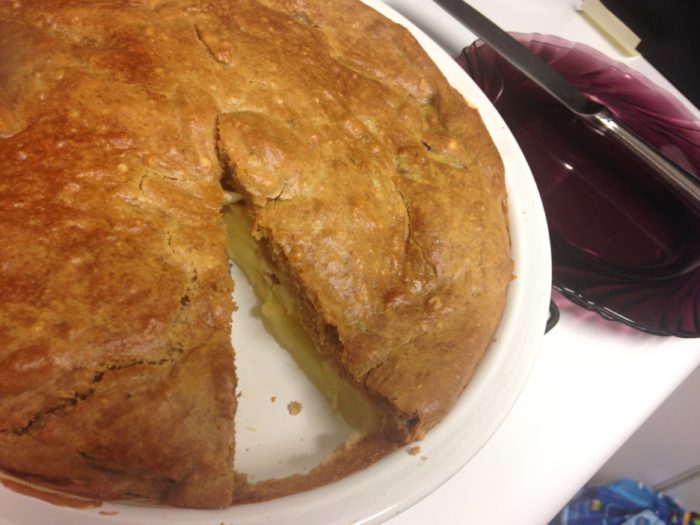We all love dessert… Pies, ice creams, cakes…. Would you like to learn how to eat dessert, but lessen its harmful effect? This article will show you how to switch out your high white flour recipes with other ingredients, soak nuts and flours (and why), and raise the amount of vitamins your body keeps.
Add Protein to Your Recipes:
It can help to add protein to our desserts and baked goods, and lower the amount of white flours. This is because our blood sugar will be more stable with higher protein, which takes a long while to digest (good).
It is pretty easy to add 1/4 to 1/2 cup of nut flour to a recipe. The baked good might be a little more dense, but not bad. If you try to use 1/34 to half of the recipe, they probably won’t hold together. (Flours have binder, and nuts do not.)
And don’t overlook beans either (like in this Black Bean Brownie Recipe.)
Flours, Nuts and Beans Are Better Soaked First:
Adding nuts to your recipe can add protein to your baked goods, which can offset the “carb-fest” of our normal cakes, cookies and quick breads. However, the nuts are only digestible only if you soak them first. Here’s why: Flours and nuts have an enzyme called phytase on them that stops us from digesting them. Ever hear of beans that were found in Southwestern cables, and are still able to grow? This coating is why. The outer Phytase layer blocks digestion as it becomes phytic acid. Then it binds with many vitamins and minerals in our body, and then get washed away in our urine and waste. Bye bye, vitamins and minerals!
These Sprouted Sunflower Seeds were soaked and toasted to get rid of the anti-digestive enzyme on the outside called phytic acid. These are readily available in stores. Nutrition label showing vitamin content of Sprouted SunFlower Seeds These sunflower seeds are one nut-free snack for children’s lunches.
Why You Care: All Grain Products are Like This
Think about it – Most bread, crackers, pasta, beans, nuts and seeds have this vitamin- and mineral-removing layer on them, unless they are first treated. (But I’ll show you how to avoid it.)
Studies on phytic acid reveal that for some people, the phytic acid in whole grains blocks calcium, zinc, magnesium, iron and copper; others seem immune to these adverse consequences, probably because of favorable gut flora, which in some cases can break down phytic acid. In addition, when animal fats providing vitamins A and D accompany dietary whole grains, the effects of phytic acid are mitigated.(Ramiel Nagel, source)
How to Soak Nuts, Directions:
It’s not difficult process to soak nuts, and its explained at the Weston Price website here and here. (Also in the Snacks section of the Nourishing Traditions book, found in many libraries.) They are soaked and then usually toasted under 150 degrees Fahrenheit to preserve enzymes. Since you are about to bake them in the oven at 350F, don’t bother toasting them so low. (The enzymes will be destroyed by the heat anyway.) You can just put then in the oven at any moderate temperature until they are crispy again. (Beware, they burn easily.)

How to Soak Grains:
One source recommends creating recipes with raw milk and grains, where the raw dough sits on the counter for 8-12 hours. I will say that I think its a bit harder to soak the grains if you aren’t using raw milk, as is the common directions in the book Nourishing Traditions. (I am afraid to use pasteurized milk because it has no safeguards in it. The raw milk still has live immune components in it.) But there are many recipes with raw milk and cream in the book listed just above.
The easiest way to soak grains, from brown rice to oatmeal to wheat berries, is to cover the grains with water by more than double. Then add a food acid like 2-3 TB cider vinegar, lemon or lime juice, or yogurt water (called whey). Let the grains sit for 8-24 hours to get rid of the phytic acid. Then rinse and cook like normal. (The oatmeal alone may need a bit less water.) [Source: Nourishing Traditions book by Sally Fallon (now Fallon Morrell]
Buy and Make Better Breads

If you buy sourdough bread, the phytic acid was taken care of by the long creation process. It is made with flour that has been growing with yeast and water on the counter for several days.
If you make something called “no knead bread”, the flour also sits for at least a day and a half or two days, so the phytic acid is similarly neutralized just by the making process.

If you visit a health food store, there are also crackers, breads and pastas made from “sprouted grains.” This means they were soaked, and then made into the product. Easy, right?
There are even sprouted flours now on the shelves of Natural Grocers in Colorado. It’s easier all the tie to eat right!

Reduce White Flours in Recipes:
Less white flour can also help our desserts and baked goods be healthier; it digests so rapidly that it causes our blood sugar to spike high, and then fall again. This yo-yo effect is super hard on the body when continued over years, and even decades.
I seriously wonder if we ALL have something called insulin resistance, a pre-cursor to diabetes (and Alzheimer’s, which is called by some experts Diabetes Type 3).




